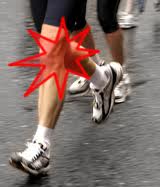5 Easy Ways To Relieve Iliotibial Band Syndrome
Iliotibial Band Syndrome, or ITB Syndrome, is a fairly common injury that affects seasoned runners almost as much as it affects beginners. It is characterized by pain on the outside of the knee, and can come on gradually over time or suddenly in the middle of a run. As it’s said, an ounce of prevention is worth a pound of cure. Here are some steps you can take to reduce the pain of having to miss out on working out.
Secrets To Relieving Iliotibial Band Syndrome
- Warm up before your start your runs. Walking and dynamic stretching exercises for as little as a quarter mile give your muscles a change to get ready and can help reduce the risk of injury.
- Make sure your shoes aren’t worn out. This can lead to excessive pronation and contribute to developing iliotibial band syndrome.
- Don’t run on the edge of a road where it begins to slant. Uneven running surfaces put excessive stress on the legs and can increase your risk of developing an overuse injury. The same goes for running on the beach. The hard packed sand by the water looks like the perfect place to run, but the slope makes it less than optimal for training runs.
- Limit running on concrete surface. Concrete is the hardest surface, followed by asphalt. If you can find well groomed dirt trails for at least part of your training, you will significantly decrease your risk of many common overuse injuries.
- When running on a track, change directions repeatedly. Track running provides a superior running surface, but the curves cause uneven distribution of your weight just as running on a slant does. You can decrease this effect by running in the outside lanes.
When All Else Fails…
If you start to feel pain on the outside of your knee, take a few days off or at least decrease your mileage and training intensity. Ice pack and rest can help decrease the inflammation, and then you can gradually try to return to running once the pain during daily activities resolves. If that doesn’t work, it’s time to see advice from a physical therapist who specializes in running athletes to find a fast acting solutions that provide long term results.
